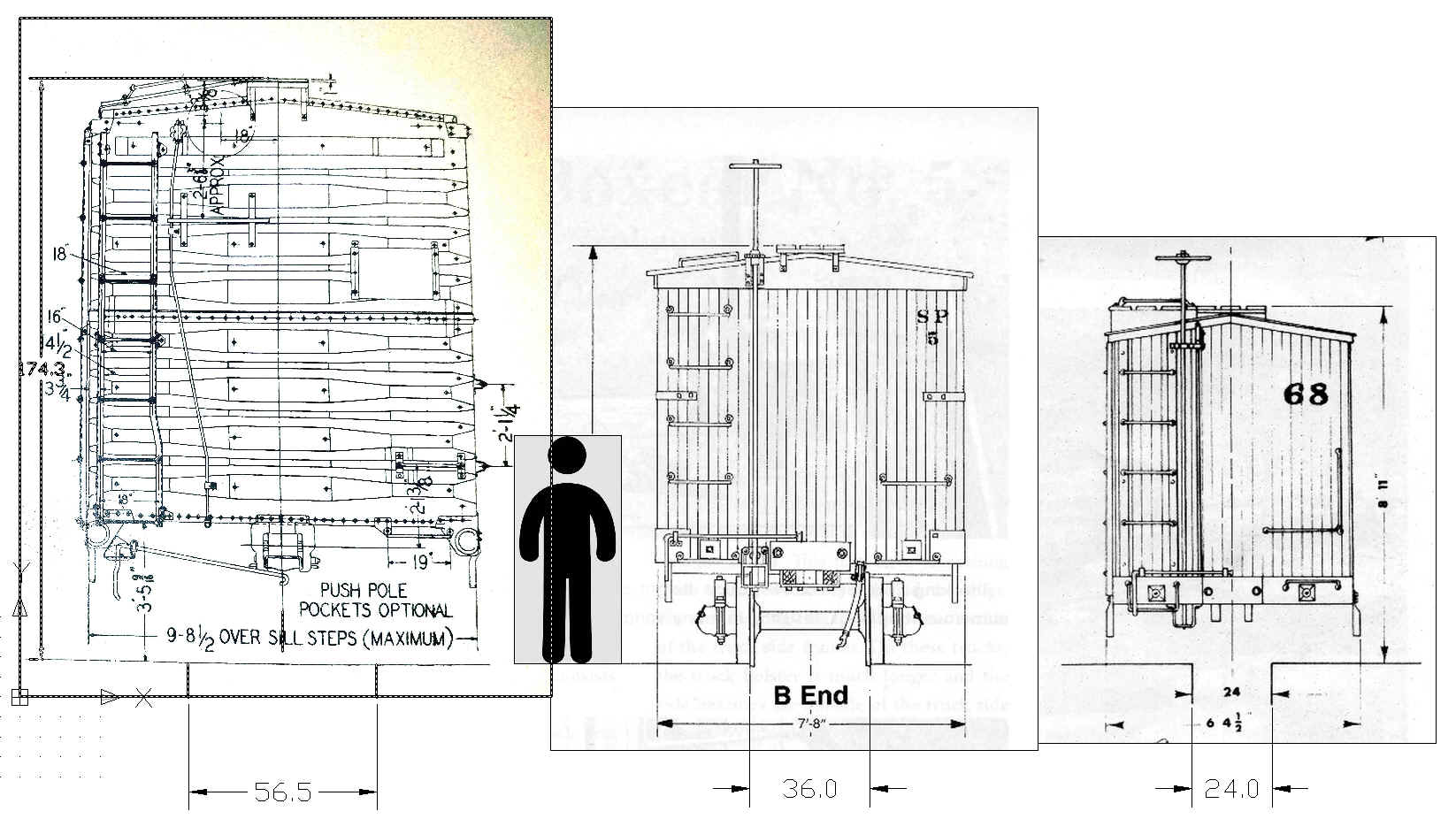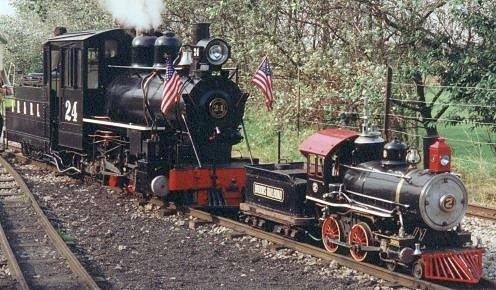Scales and Gauges
Beginners often don't understand
the difference between scales and gauges. The confusion often comes
from others who use the terms loosely. We say "HO Scale" and "G gauge"
simply because it is customary. The distinction is actually simple -
"gauge" is the distance between the inside of the rails and "scale" is
the fraction of the prototype that our model is built to. "Standard
gauge" (4 ft 8.5 in between the rails) is the customary gauge for
railroads in the US, the UK, and Europe. "Live steam" tracks are 7.5
inches in gauge (in the western part of the US) and usually feature
models of standard gauge, which gives a scale of 1.5 in per foot. (Some
purists say they use a scale of 1.6 in/ft.) However, if you build a
model of one of the Colorado 3 ft. gauge locomotives to run on 7.5 in
track, the scale will be 2.5 in/ft. (3 ft x 2.5 in/ft = 7.5 in). In
fact, people have built models of the Maine 2 ft gauge railroad to run
on 7.5 in track. This gives a scale of 4.75 in/ft. These models are
quite large. A beautiful example is the Sandy River & Clearlake
Here is what full size boxcars would look like lined up with a man-sized icon

If you now build models of these to run on 15 in gauge track you will get this
The scales for 5" and 7.5" are exact. Models of standard gauge running
on 15" gauge track are usually built to 3" scale. The exact gauge of 3"
scale standard gauge would be 14 1/8" gauge. In fact, there are some
14" gauge tracks in the US.
The only example I know of where a 2 ft gauge locomotive has been modeled to run on 15" gauge track resides at the Cleethorpes Coast Light Railway in Britain. It is a monster compared with a Cagney amusement park locomotive.

